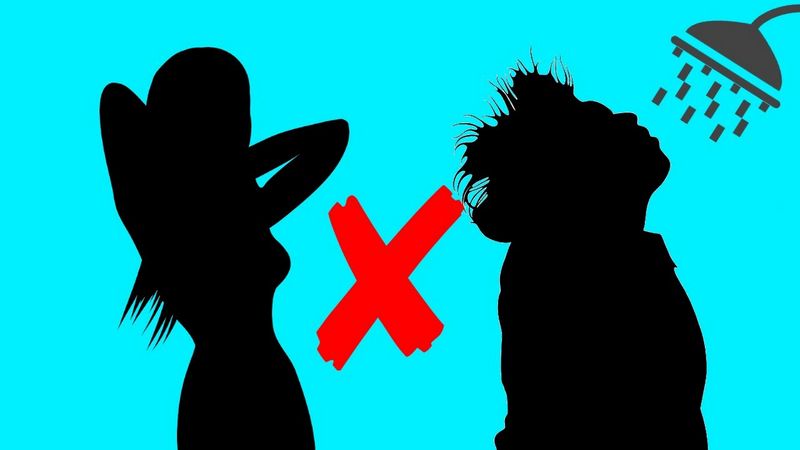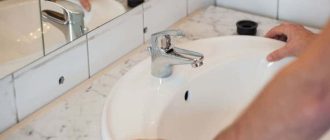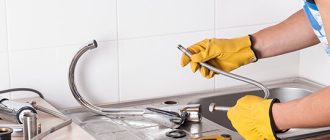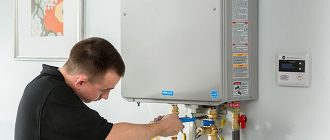
Common Problems with Shower Diverters: Causes and Solutions
When it comes to plumbing a shower, one of the most common issues that homeowners face is with the shower diverter. The shower diverter is responsible for directing the water flow between the showerhead and the tub faucet. However, over time, it is not uncommon for problems to arise with the diverter, causing water to leak or preventing it from properly flowing to the desired outlet.
One common issue is a faulty or worn-out diverter valve. This can result in water leaking from the showerhead even when the diverter is set to the tub faucet, or vice versa. If you notice water coming from the wrong outlet, it is likely that the diverter valve needs to be replaced.
Another common problem is a stuck or stiff diverter. If you find it difficult to switch the water flow between the showerhead and the tub faucet, a build-up of mineral deposits or debris may be to blame. In this case, it is important to clean the diverter thoroughly to restore its proper function.
Additionally, inadequate water pressure can also be a sign of a diverter problem. If you notice a decrease in water pressure when using the shower, the diverter may be partially clogged or not opening fully. Regular cleaning, as well as occasional replacement, can help prevent or resolve such issues.
Leaking Shower Diverter
If you’re experiencing a leaking shower diverter, it’s important to address the issue promptly to prevent further damage and water waste. Here are some troubleshooting tips to help you identify and fix the problem:
- Inspect the diverter valve: Start by visually examining the diverter valve to check for any visible signs of leakage or damage. Look for dripping or water pooling around the valve.
- Tighten connections: Check all the connections around the diverter valve, including the showerhead and the faucet. Sometimes, loose connections can cause leaks. Use a wrench or pliers to tighten any loose nuts or connectors.
- Replace the diverter valve gasket: If the leakage persists, the gasket inside the diverter valve may be worn out or damaged. To fix this, turn off the water supply and remove the diverter valve. Replace the gasket with a new one and reinstall the diverter valve.
- Consider diverter valve replacement: If none of the above solutions work, it may be necessary to replace the entire shower diverter valve. This is a more involved process and may require the help of a professional plumber.
Remember to always turn off the water supply before attempting any repairs or replacements. If you’re unsure or uncomfortable with any of the steps mentioned above, it’s best to consult a professional plumber who can assess and fix the leaking shower diverter for you.
By addressing a leaking shower diverter promptly, you can save water, prevent further damage to your shower system, and ensure the efficient functioning of your bathroom fixtures.
Diverter Handle Stuck
One common issue that people may experience with the plumbing of a shower is a stuck diverter handle. The diverter handle is the component that allows you to switch the water flow between the showerhead and the tub spout. If the handle gets stuck in one position, it can prevent the water from flowing properly.
There are a few potential causes for a diverter handle to get stuck. One possibility is that there is a buildup of mineral deposits or debris inside the diverter valve. Over time, these deposits can accumulate and cause the handle to become stuck. Another possibility is that there is a problem with the handle mechanism itself, such as a broken or worn-out part.
To troubleshoot a stuck diverter handle, you can start by trying to clean out any debris or mineral deposits. You can do this by removing the handle and using a mixture of vinegar and water to soak the diverter valve. This can help to dissolve any buildup and free up the handle. If cleaning the valve does not solve the problem, it may be necessary to replace the handle mechanism.
If you are not comfortable troubleshooting or repairing the plumbing yourself, it is always best to consult a professional plumber. They will have the knowledge and experience to properly diagnose and fix any issues with the diverter handle.
Inconsistent Water Flow
One common plumbing issue that can affect a shower diverter is inconsistent water flow. This problem can manifest in different ways, such as weak water pressure, fluctuating water temperature, or uneven distribution of water between the showerhead and the tub faucet.
The first step in troubleshooting inconsistent water flow is to check for any clogs or blockages in the shower diverter. Sediment, mineral deposits, or debris can accumulate over time and restrict the water flow. To fix this, you can try removing the shower diverter and cleaning it thoroughly with a brush or using a vinegar solution to dissolve any deposits.
If cleaning the diverter does not solve the problem, the issue may lie in the plumbing system. It is possible that there are obstructions or leaks in the pipes that are affecting the water flow. In this case, it is recommended to call a professional plumber to inspect and repair the plumbing system.
Additionally, older or faulty shower diverters may be the cause of inconsistent water flow. Over time, the internal components of the diverter can wear out or become damaged, leading to improper water flow. In such cases, it may be necessary to replace the shower diverter with a new one. When doing so, it is important to choose the right diverter that is compatible with your shower system.
In conclusion, inconsistent water flow in a shower can be a frustrating issue to deal with. By checking for clogs, cleaning the diverter, inspecting the plumbing system, and replacing faulty diverters, you can resolve this problem and enjoy a consistent and comfortable shower experience.
Water Temperature Fluctuations
One common issue when plumbing a shower is water temperature fluctuations. This can be a frustrating problem, as it can make showering uncomfortable and inconvenient. There are a few possible causes for water temperature fluctuations in a shower:
- Improperly adjusted shower valve: The shower valve controls the flow and temperature of the water. If it is not adjusted correctly, it can lead to temperature fluctuations. Make sure to check the shower valve and adjust it as needed.
- Sediment buildup in shower valve: Over time, sediment and mineral deposits can accumulate in the shower valve. This can affect the flow of water and cause temperature fluctuations. To fix this issue, you can try cleaning the shower valve or replacing it if necessary.
- Inadequate water pressure: Low water pressure can also contribute to temperature fluctuations. If the water pressure is too low, the shower may not be able to maintain a consistent temperature. In this case, you may need to check your home’s water pressure or consider installing a pressure-boosting system.
- Water heater issues: Problems with the water heater can also cause temperature fluctuations in the shower. Issues like a faulty thermostat or a buildup of sediment in the tank can affect the water temperature. It is recommended to check the water heater and have it serviced if needed.
If you are experiencing water temperature fluctuations in your shower, it is best to troubleshoot the issue to identify the underlying cause. By addressing the specific problem, you can restore a consistent and comfortable shower experience.
Shower Diverter not Redirecting Water
If your shower diverter is not redirecting water properly, it may be time for a diverter valve replacement. The diverter valve is responsible for directing water to different outlets in your shower, such as the showerhead or the bathtub faucet. Over time, the diverter valve can become worn or damaged, which can lead to water flow issues.
One sign that your diverter valve needs to be replaced is if water is coming out of both the showerhead and the bathtub faucet at the same time, even when the diverter is supposed to be directing water to one outlet. This can be a frustrating issue, as it can lead to wasted water and reduced water pressure for both outlets.
To fix this problem, you will need to replace the diverter valve. This can be a relatively simple DIY project, but if you are not comfortable working with plumbing fixtures, it is always best to hire a professional. Here are the steps to replace a shower diverter valve:
- Turn off the water supply: Before beginning any work, you will need to turn off the water supply to your shower. This can usually be done by shutting off the water valves located near the shower.
- Remove the old diverter valve: Using a wrench, disconnect the old diverter valve from the water supply pipes. Be sure to have a bucket or towel handy to catch any residual water that may be in the pipes.
- Install the new diverter valve: Take the new diverter valve and attach it to the water supply pipes. Use Teflon tape on the threads to ensure a tight seal.
- Test the new diverter valve: Once the new valve is installed, turn the water supply back on and test the diverter by turning the shower handle. Make sure water is only coming out of the desired outlet and not both outlets.
By following these steps, you should be able to replace your shower diverter valve and resolve the issue of water not being redirected properly. If you are unsure about any of the steps or encounter any difficulties, it is recommended to seek professional help to ensure the job is done correctly.
Diverter Valve Replacement
If your shower diverter valve is not functioning properly and other troubleshooting tips did not help, you may need to consider replacing the diverter valve.
Here are the steps to follow for a successful diverter valve replacement:
- Start by turning off the water supply to the shower. Most showers have a shut-off valve located near the fixtures, so make sure to locate it and turn it off.
- Once the water supply is turned off, remove the shower handle or trim to expose the diverter valve. This may require removing screws or decorative caps.
- Use a wrench or pliers to detach the diverter valve from the pipe behind the wall. You may need to apply some force, so be careful not to damage the plumbing.
- Once the old diverter valve is removed, clean the pipe and ensure it is free from any debris or residue.
- Apply plumber’s tape or pipe joint compound to the threads of the new diverter valve to ensure a watertight seal.
- Insert the new diverter valve into the pipe and use a wrench or pliers to tighten it securely.
- Replace the shower handle or trim and make sure it is properly aligned and secured.
- Turn on the water supply and check for any leaks. If there are no leaks, test the new diverter valve to ensure it is working correctly.
By following these steps, you should be able to replace the diverter valve in your shower and restore its proper functionality. However, if you are not confident in your plumbing skills, it is recommended to hire a professional plumber to ensure the job is done correctly.
Showerhead Clogging
One common issue with shower diverters is showerhead clogging. Over time, mineral deposits and dirt can accumulate inside the showerhead, which can restrict the flow of water and impact the showering experience. If you notice reduced water pressure or uneven water distribution from your showerhead, clogging could be the culprit.
To deal with showerhead clogging, you can try cleaning the showerhead. Here are some steps to follow:
| 1 | Remove the showerhead from the plumbing a shower by twisting it counterclockwise. |
| 2 | Soak the showerhead in a mixture of warm water and vinegar for about an hour. This will help dissolve the mineral deposits. |
| 3 | Use a small brush, like a toothbrush, to scrub away any remaining deposits or dirt. |
| 4 | Rinse the showerhead thoroughly with water to remove any vinegar residue. |
| 5 | Reattach the showerhead to the plumbing a shower by twisting it clockwise. |
If cleaning the showerhead doesn’t resolve the issue, there may be a deeper clog in the plumbing system. In such cases, it’s recommended to seek professional assistance from a plumber. They have the tools and expertise to diagnose and fix the problem, ensuring your showerhead operates smoothly.
Regular maintenance, such as cleaning the showerhead and checking for any clogs, can help prevent showerhead clogging issues in the future. Additionally, using a showerhead with a built-in filter can reduce the buildup of minerals and prolong the life of your showerhead.
Lack of Water Pressure
If you are experiencing a lack of water pressure from your shower head, the diverter valve may be at fault. The diverter valve is responsible for directing water flow from the tub spout to the showerhead.
A common issue that can cause a lack of water pressure is a faulty or worn-out diverter valve. Over time, the diverter valve can become worn or clogged with sediment and mineral deposits, restricting the flow of water. In some cases, the diverter valve may need to be cleaned or replaced.
To determine if the diverter valve is the cause of the low water pressure, you can try removing the showerhead and running the water directly through the tub spout. If the water pressure increases, it is likely that the diverter valve is the culprit.
If you are comfortable working with plumbing fixtures, you may be able to clean or replace the diverter valve yourself. However, it is recommended to consult a professional plumber to ensure proper installation and avoid causing further damage.
If you decide to undertake the diverter valve replacement yourself, you will need to follow these general steps:
- Turn off the water supply to the shower.
- Remove the showerhead and arm from the shower wall.
- Locate the diverter valve, which is typically located behind the shower wall.
- Remove the old diverter valve.
- Install the new diverter valve according to the manufacturer’s instructions.
- Reassemble the showerhead and arm.
- Turn on the water supply and test for proper water pressure.
By replacing the diverter valve, you should be able to restore proper water pressure to your showerhead and enjoy a more satisfying shower experience.
Diverter Handle Loose
If your shower diverter handle feels loose or wobbles when you try to use it, it may be a sign that the diverter valve needs to be replaced. Over time, the handle can become worn or the internal components of the valve can become damaged, resulting in a loose or unstable handle.
Replacing the diverter valve is a relatively simple process that can usually be done without professional assistance. You will first need to turn off the water supply to your shower. This can typically be done by shutting off the water valves located near the shower. Once the water is turned off, you can remove the diverter handle by unscrewing it counterclockwise.
Next, you will need to remove the old diverter valve. This may require the use of a wrench or pliers, depending on the type of valve you have. Once the old valve is removed, you can then install the new diverter valve by screwing it into place.
After the new valve is securely in place, you can reattach the diverter handle by screwing it back onto the valve in a clockwise direction. Once the handle is tightened, you can turn the water supply back on and test the diverter to ensure it is working properly.
If you are unsure about replacing the diverter valve yourself, it is always best to consult a professional plumber. They will have the expertise and tools necessary to quickly and efficiently replace the valve, ensuring it is done correctly and preventing any further damage to your shower system.
Shower Diverter Plate Damaged
If you are experiencing issues with your shower diverter, one possible cause could be a damaged diverter plate. The diverter plate is an important component of the shower plumbing, responsible for controlling the flow of water between the showerhead and the bathtub faucet. When the diverter plate is damaged, it may not function properly, leading to issues such as water leaking from both the showerhead and faucet simultaneously.
To determine if your shower diverter plate is damaged, you can perform a visual inspection. Remove the shower diverter handle and plate cover to examine the condition of the diverter plate. Look for any cracks, chips, or signs of wear and tear. If you notice any damage, it is likely that the diverter plate needs to be replaced.
To fix a damaged shower diverter plate, you will need to purchase a replacement plate from a plumbing supply store. It is essential to choose a diverter plate that matches the specific make and model of your shower diverter system to ensure proper fit and functionality. Follow the manufacturer’s instructions for installation, or consult a professional plumber if you are not comfortable with plumbing tasks.
It is also worth noting that a damaged shower diverter plate may be an indication of other plumbing issues within your shower. If the diverter plate becomes damaged, it could be a sign of excessive pressure or wear on the plumbing system. In such cases, it is recommended to have a professional plumber inspect the overall condition of your shower plumbing to identify and address any underlying problems.
Regular maintenance and care can help prevent damage to the shower diverter plate and other plumbing components. Avoid using excessive force when operating the diverter handle and ensure that it is properly aligned with the plate. Additionally, consider installing a showerhead filter to prevent mineral buildup, which can also contribute to plumbing issues over time.
If you are unsure about the cause of your shower diverter problems or need assistance with repairs, it is always best to consult a professional plumber. They have the knowledge and expertise to diagnose and fix plumbing issues effectively, ensuring that your shower diverter operates smoothly and efficiently.
Diverter Malfunctioning
If you are experiencing problems with the shower diverter, such as water continuously flowing from the showerhead when you want it to come out of the tub spout, it could be due to a diverter malfunction. The diverter is a valve that controls the flow of water in your plumbing system, allowing you to switch between the showerhead and the tub spout. When the diverter malfunctions, it can lead to a variety of issues.
Common signs of a diverter malfunction include:
- Water leaking from the tub spout when the shower is turned on
- No water coming out of the showerhead when the diverter is engaged
- Water coming out of both the showerhead and the tub spout at the same time
- Difficulty switching the diverter handle between positions
If you are experiencing any of these issues, there are a few troubleshooting steps you can try before calling a plumber.
1. Clean the diverter valve: Over time, mineral deposits can build up in the diverter valve, causing it to become stuck or blocked. Remove the handle and trim plate to access the diverter valve, and clean it with a mixture of equal parts vinegar and water. Use a brush or cloth to remove any debris, and then reassemble the parts.
2. Replace the diverter valve: If cleaning the diverter valve does not fix the problem, it may need to be replaced. Shut off the water supply to the shower, remove the old diverter valve, and install a new one. Make sure to use the correct size and type of diverter valve for your plumbing system.
3. Check for other plumbing issues: If the diverter is functioning properly but you are still experiencing issues, there may be other plumbing problems causing the malfunction. Check for any leaks or clogs in the pipes leading to the shower, and address those issues accordingly.
If you are not comfortable troubleshooting or fixing the diverter yourself, it is always best to contact a professional plumber. They have the knowledge and experience to properly diagnose and fix the issue, ensuring your shower diverter functions correctly.
Shower Diverter Maintenance
Maintaining your shower diverter is essential to ensure its proper functioning and to prevent any potential issues. Regular maintenance can extend the life of your diverter valve and help you avoid the need for costly diverter valve replacement. Here are some tips to keep your shower diverter in good condition:
1. Clean the diverter: Over time, mineral deposits and debris can accumulate in the diverter valve, causing it to become stuck or fail to divert water properly. Regularly clean the diverter by removing the showerhead and using a soft brush or toothbrush to scrub away any buildup. Rinse thoroughly afterwards.
2. Check for leaks: Inspect the diverter valve for any leaks or signs of water damage. If you notice water dripping or any damp areas around the valve, it may be a sign that the diverter needs repair or replacement.
3. Lubricate the diverter: Applying a small amount of plumber’s grease or silicone lubricant to the diverter can help improve its performance and prevent sticking. Be sure to follow the manufacturer’s instructions for lubricating the specific type of diverter valve you have.
4. Test the diverter: Regularly test the diverter to ensure it is functioning properly. Turn on the shower and switch between the different settings to make sure water is being diverted correctly. If you notice any issues, such as a weak flow or water coming out of both the showerhead and tub faucet simultaneously, it may be time to replace the diverter valve.
By following these maintenance tips, you can keep your shower diverter in optimal condition and minimize the need for diverter valve replacement. If you do encounter persistent problems with your diverter, it is recommended to consult a professional plumber for further assistance.
Installing a New Shower Diverter
When it comes to plumbing a shower, one of the most common issues that homeowners face is a malfunctioning shower diverter. Luckily, installing a new shower diverter is a relatively simple process that can be done by most DIY enthusiasts.
To install a new shower diverter, you will need a few basic tools, including an adjustable wrench, a screwdriver, and plumber’s tape. Here is a step-by-step guide to help you get started:
- Turn off the water supply: Before you begin any plumbing work, it is important to turn off the water supply to your shower. This can usually be done by shutting off the water valves located in your bathroom.
- Remove the old shower diverter: Use an adjustable wrench to loosen and remove the old shower diverter. This may require some force, so be careful not to damage any surrounding plumbing fixtures.
- Clean the threads: After removing the old shower diverter, use a clean cloth or brush to clean any debris or residue from the threads.
- Apply plumber’s tape: Wrap plumber’s tape around the threads of the new shower diverter. This will help create a watertight seal when the diverter is installed.
- Install the new shower diverter: Insert the new shower diverter into the valve body and tighten it with an adjustable wrench. Be sure not to overtighten, as this can damage the diverter.
- Test for leaks: Turn on the water supply and test the new shower diverter for any leaks. If you notice any leaks, make sure the diverter is tightened properly or apply more plumber’s tape.
- Finish the installation: Once you are confident that the new shower diverter is installed correctly and there are no leaks, you can finish the installation by replacing any cosmetic fixtures, such as the shower handle or trim plate.
By following these steps, you can successfully install a new shower diverter and restore proper functionality to your shower. Remember to always consult the manufacturer’s instructions and seek professional help if you are unsure or uncomfortable with any part of the installation process.
Q&A:
Why is water still coming out of the spout when I turn on the shower?
There could be several reasons for this issue. One possibility is that the shower diverter valve is not fully engaged or is faulty. Another possibility is that there is a blockage or debris within the diverter valve, preventing it from fully diverting the water. In some cases, the issue may be with the showerhead itself, such as a clog or a faulty valve. It is recommended to inspect the diverter valve and showerhead for any visible issues or blockages, and if necessary, replace or repair them accordingly.
How can I fix a stuck shower diverter?
If the shower diverter is stuck, you can try a few troubleshooting steps to fix it. First, ensure that the diverter handle is in the proper position. If it is not aligned correctly, it may cause the diverter to get stuck. You can also try lubricating the diverter with a silicone-based lubricant, as this can help loosen any stuck components. If these steps do not work, you may need to disassemble the diverter valve and replace any worn or damaged parts.
Why is my shower diverter leaking?
A leaking shower diverter can be caused by a few different factors. One common cause is a worn or damaged washer or seal within the diverter valve. Over time, these components can deteriorate and cause leaks. Another possible cause is loose or damaged connections between the diverter valve and the shower pipe. It is recommended to inspect these components and replace any worn or damaged parts to fix the leak. It may also be helpful to apply plumber’s tape or a sealant to ensure a tight connection.
What should I do if water is not coming out of the showerhead when I turn on the shower?
If no water is coming out of the showerhead when the shower is turned on, there could be a few possible causes. First, check if the shower diverter is fully engaged and properly diverting the water to the showerhead. If the diverter is working correctly, the issue may be with the showerhead itself. It is possible that the showerhead is clogged or blocked, preventing the water from flowing through. In this case, it may be necessary to remove the showerhead and clean or replace it to restore proper water flow.
Why is there a drop in water pressure when I use the shower diverter?
A drop in water pressure when the shower diverter is used can indicate a few potential issues. One possibility is that there is a blockage or restriction within the diverter valve or showerhead, causing the water flow to be restricted. Another possibility is that there is a problem with the plumbing system, such as a clog or a faulty valve. It is recommended to check for any visible blockages or damage within the diverter valve and showerhead, and if necessary, clean or replace them. If the issue persists, it may be necessary to call a plumber to inspect the plumbing system for any underlying problems.




